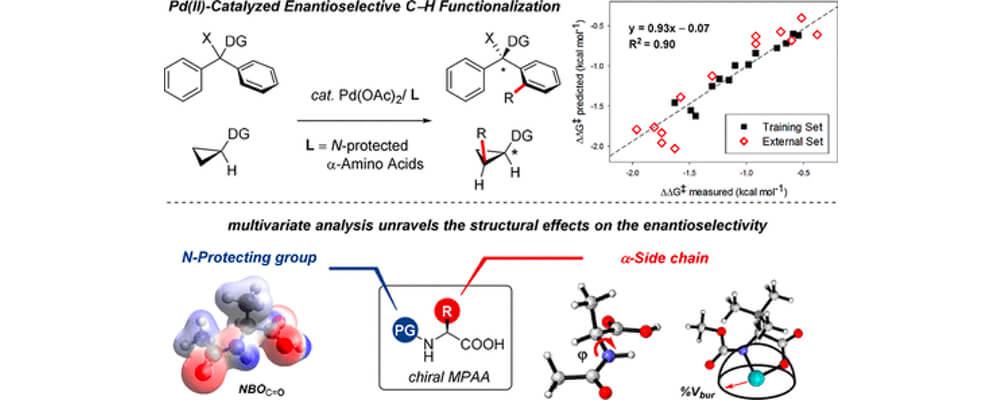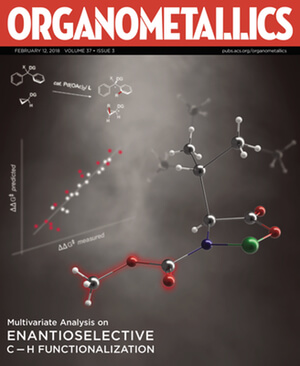Quantifying Structural Effects of Amino Acid Ligands in Pd(II)-Catalyzed Enantioselective C–H Functionalization Reactions
Yoonsu Park, Zachary L. Niemeyer, Jin-Quan Yu, and Matthew S. Sigman
Organometallics,
2018, 37, (2), 203; DOI:10.1021/acs.organomet.7b00751


11/2017
A recent collaborative report from the Sigman and Yu groups, along with a visiting student from South Korea, describes computational models that delineate some of the underlying roles of mono-protected amino acid ligands in palladium catalyzed C-H functionalization reactions.
The Yu group has built a large research program using protected amino acid ligands along with palladium to promote C-H functionalization reactions. However, the ligand choice has often been confounding, wherein certain ligands are highly effective at yielding a selective reaction within one reaction class, but not all. In essence, a universal ligand choice is not possible, as various ligands have been found to be optimal for varying reactions.
To better understand the roles these ligands play in selecting the appropriate C-H bond, a retrospective analysis was conducted using four previously published reactions. Computationally constructed molecular models were analyzed and numerical descriptors were extracted. These values were then used to predict the reaction selectivities for each of the four reactions. Based on the descriptors used within these predictions, the roles of the ligands could be teased out. For example, larger ligand size in one reaction facilitated higher selectivities, whereas in another, bigger ligands hindered selectivity. The differing ligand roles could therefore be identified, and importantly, used to select a non-intuitive optimal ligand. The ability to predict a better ligand choice from a small set of reaction outcomes will be useful in the future development of C-H functionalization reactions that utilize the amino acid ligands.
This collaboration was distinctly enabled by the CCHF. The lead author, Yoonsu Park, from Sukbok Chang's group at KAIST, was able to visit and work with the Sigman group through sponsorship within the Center for Catalytic Hydrocarbon Functionalization, within the Institute for Basic Science in South Korea. Park, the Sigman group, and the Yu group used the tools within the CCHF to rapidly bring this research to fruition, a direct result of the collaborative environment promoted within the C-H functionalization community and the CCHF.
Authors: Zach Niemeyer and Yoonsu Park